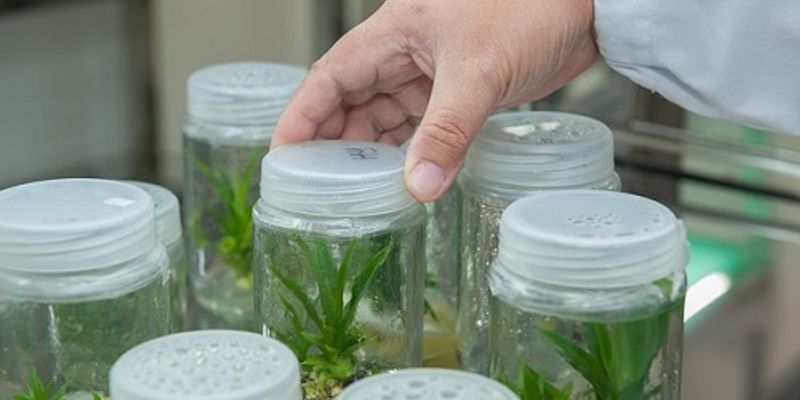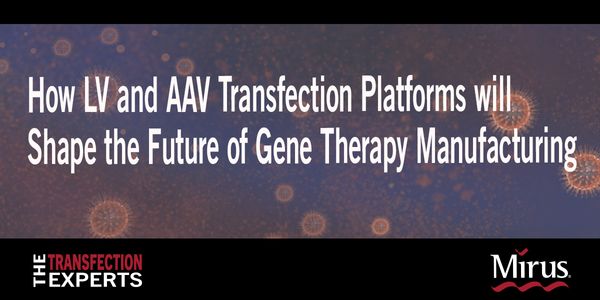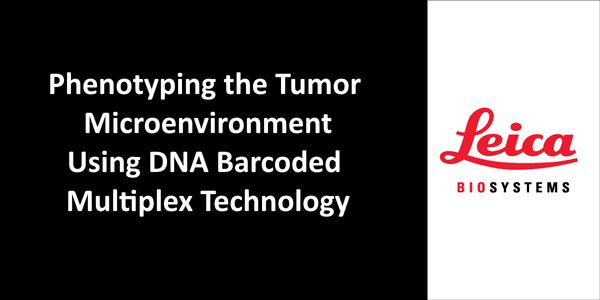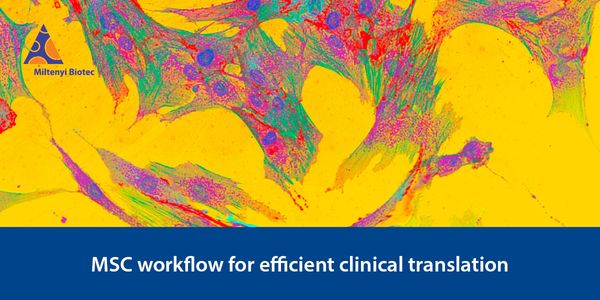Tissue Culture
Tissue culture is the growth of tissues or cells separate from the organism. This is typically facilitated via use of a liquid, semi-solid, or solid growth medium, such as broth or agar.
-
OCT 08, 2020 | 7:00 AMDATE: October 8, 2020 TIME: 7:00am PDT, 10:00am EDT, 4:00pm CEST How often do you pipette in your cell culture lab every day? Usually, we do it so often that we tend stop thinking about ho...SEP 30, 2020 | 12:00 AMCombinatorial inhibition of effector and feedback pathways is a promising treatment strategy for KRAS mutant cancers. However, the particular pathways that should be targeted to optimize the...SEP 30, 2020 | 12:00 AMCRISPR experiments are a powerful tool which are easy to carry out, however it is more difficult to determine the outcome of these experiments, and to ensure that only the desired targets we...SEP 23, 2020 | 4:30 PMThere are many methods of nucleic acid isolation. Each technology offers different approaches of purification of the template. However, it is important to control carry over of “proces...Speaker: Katherine MechlingSEP 23, 2020 | 3:00 PMFor more than a century, breakthroughs in biological sciences have relied on the ability to study cells outside of respective organisms. While majority of cell culturing is still performed u...Speaker: Jun Park, PhDSEP 23, 2020 | 1:30 PMExtracellular vesicles (EVs) are lipid bilayer-delimited pieces of cells that are released from the plasma membrane as "ectosomes" and from the endosomal system as "exosomes.&...SEP 23, 2020 | 12:00 PMExtracellular ligands bind to receptors on the cell surface leading to receptor internalization. Once internalized into small vesicles, the vesicles fuse with an organelle known as the sorti...SEP 23, 2020 | 10:30 AMIntestinal organoids are self-organizing, 3D structures derived from either pluripotent stem cells or from primary tissues with the abiltiy to recapitulate some of the spatial architecture a...Speaker: Kevin SuSEP 23, 2020 | 9:00 AMExtracellular vesicles (EVs) are nanosized vesicles containing active proteins, lipids, and different types of genetic material such as non coding RNA species, related to the characteristics...SEP 23, 2020 | 7:30 AMCell culture continues to be a critical tool for most life science research and applications. From HeLa to iPSCs and 3D to organoids, culture methods have become more advanced and techniques...Speaker: Marina Wiklander, PhDSEP 23, 2020 | 6:00 AMMicroRNAs (miRs) are small non-coding RNAs whose expression is altered in several types of human cancers. Recent evidence supports their inter-cellular transfer through extracellular vesicle...SEP 23, 2020 | 12:00 AMChronic kidney disease (CKD) is a major public health threat, affecting 11-15% of the U.S. population alone. Currently, there are no effective therapies to cure CKD. Drug therapies are not p...SEP 23, 2020 | 12:00 AMChronic kidney disease (CKD) is a global health threat, affecting over 10% of the world population, including an estimated 37 million Americans. Importantly, glomerular diseases account for...SEP 23, 2020 | 12:00 AMReactive oxygen species (ROS) are well-known for their detrimental effects leading to oxidative stress, cell death, aging, and degenerative disorders. However, there is increasing evidence t...SEP 23, 2020 | 12:00 AMI will present our new computer vision algorithm, ST-Net, which can computationally synthesize spatially resolved transcriptomics directly from H&E histology images (He et al. Nature Bio...SEP 23, 2020 | 12:00 AMGeoMx Digital Spatial Profiling Technology! The GeoMx Digital Spatial Profiler (DSP) is a novel platform developed by NanoString. This leading digital technology offers multiplexed measureme...SEP 23, 2020 | 12:00 AMThe extracellular matrix (ECM) is a three-dimensional structure that provides physical support for tissues/organs and biochemical/biomechanical cues for tissue morphogenesis, differentiation...SEP 23, 2020 | 12:00 AMExtracellular vesicles (EV) from many cell types have demonstrated therapeutic potential against many different diseases. Inhibiting progress in this area is the capability to produce EVs in...SEP 23, 2020 | 12:00 AMLearning Objectives: 1. Understand methods of isolating and enriching exosomes along with their pros/cons of the different techniques 2. What do we mean when we talk about subtyping, and wha...AUG 25, 2020 | 8:00 AMDATE: August 25, 2020 TIME: 8:00am PDT, 10:00am CDT, 11:00am EDT Recombinant lentivirus (LV) and adeno-associated virus (AAV) are critical components of cell and gene therapies, which show g...JUN 30, 2020 | 9:00 AMDATE: June 30, 2020 TIME: 9:00am PDT, 12:00pm EDT QC laboratories perform a critical role in demonstrating pharmaceutical products are consistently manufactured, safe, potent, and pure. At t...JUN 30, 2020 | 8:00 AMDATE: June 30, 2020 TIME: 8:00am PT, 11:00am Understanding the tumor microenvironment (TME) is essential for the development of effective treatments for cancer patients. Traditional multi...JUN 23, 2020 | 10:00 AMDATE: June 23, 2020 TIME: 10:00am PT Human mesenchymal stromal or stem cells (MSCs)-based immunomodulation treatment has been proposed as a suitable therapeutic approach for many diseases, s...JUN 18, 2020 | 9:00 AMDATE: June 18, 2020 TIME: 9:00am PDT, 12:00pm EDT Despite the success of immunotherapy against several malignancies including melanoma and lung adenocarcinoma, glioblastoma remains the excep...
OCT 08, 2020 | 7:00 AM
DATE: October 8, 2020 TIME: 7:00am PDT, 10:00am EDT, 4:00pm CEST How often do you pipette in your cell culture lab every day? Usually, we do it so often that we tend stop thinking about ho...
SEP 30, 2020 | 12:00 AM
Combinatorial inhibition of effector and feedback pathways is a promising treatment strategy for KRAS mutant cancers. However, the particular pathways that should be targeted to optimize the...
SEP 30, 2020 | 12:00 AM
CRISPR experiments are a powerful tool which are easy to carry out, however it is more difficult to determine the outcome of these experiments, and to ensure that only the desired targets we...
SEP 23, 2020 | 4:30 PM
There are many methods of nucleic acid isolation. Each technology offers different approaches of purification of the template. However, it is important to control carry over of “proces...
Speaker:
Katherine Mechling
SEP 23, 2020 | 3:00 PM
For more than a century, breakthroughs in biological sciences have relied on the ability to study cells outside of respective organisms. While majority of cell culturing is still performed u...
Speaker:
Jun Park, PhD
SEP 23, 2020 | 1:30 PM
Extracellular vesicles (EVs) are lipid bilayer-delimited pieces of cells that are released from the plasma membrane as "ectosomes" and from the endosomal system as "exosomes.&...
SEP 23, 2020 | 12:00 PM
Extracellular ligands bind to receptors on the cell surface leading to receptor internalization. Once internalized into small vesicles, the vesicles fuse with an organelle known as the sorti...
SEP 23, 2020 | 10:30 AM
Intestinal organoids are self-organizing, 3D structures derived from either pluripotent stem cells or from primary tissues with the abiltiy to recapitulate some of the spatial architecture a...
Speaker:
Kevin Su
SEP 23, 2020 | 9:00 AM
Extracellular vesicles (EVs) are nanosized vesicles containing active proteins, lipids, and different types of genetic material such as non coding RNA species, related to the characteristics...
SEP 23, 2020 | 7:30 AM
Cell culture continues to be a critical tool for most life science research and applications. From HeLa to iPSCs and 3D to organoids, culture methods have become more advanced and techniques...
Speaker:
Marina Wiklander, PhD
SEP 23, 2020 | 6:00 AM
MicroRNAs (miRs) are small non-coding RNAs whose expression is altered in several types of human cancers. Recent evidence supports their inter-cellular transfer through extracellular vesicle...
SEP 23, 2020 | 12:00 AM
Chronic kidney disease (CKD) is a major public health threat, affecting 11-15% of the U.S. population alone. Currently, there are no effective therapies to cure CKD. Drug therapies are not p...
SEP 23, 2020 | 12:00 AM
Chronic kidney disease (CKD) is a global health threat, affecting over 10% of the world population, including an estimated 37 million Americans. Importantly, glomerular diseases account for...
SEP 23, 2020 | 12:00 AM
Reactive oxygen species (ROS) are well-known for their detrimental effects leading to oxidative stress, cell death, aging, and degenerative disorders. However, there is increasing evidence t...
SEP 23, 2020 | 12:00 AM
I will present our new computer vision algorithm, ST-Net, which can computationally synthesize spatially resolved transcriptomics directly from H&E histology images (He et al. Nature Bio...
SEP 23, 2020 | 12:00 AM
GeoMx Digital Spatial Profiling Technology! The GeoMx Digital Spatial Profiler (DSP) is a novel platform developed by NanoString. This leading digital technology offers multiplexed measureme...
SEP 23, 2020 | 12:00 AM
The extracellular matrix (ECM) is a three-dimensional structure that provides physical support for tissues/organs and biochemical/biomechanical cues for tissue morphogenesis, differentiation...
SEP 23, 2020 | 12:00 AM
Extracellular vesicles (EV) from many cell types have demonstrated therapeutic potential against many different diseases. Inhibiting progress in this area is the capability to produce EVs in...
SEP 23, 2020 | 12:00 AM
Learning Objectives: 1. Understand methods of isolating and enriching exosomes along with their pros/cons of the different techniques 2. What do we mean when we talk about subtyping, and wha...
AUG 25, 2020 | 8:00 AM
DATE: August 25, 2020 TIME: 8:00am PDT, 10:00am CDT, 11:00am EDT Recombinant lentivirus (LV) and adeno-associated virus (AAV) are critical components of cell and gene therapies, which show g...
JUN 30, 2020 | 9:00 AM
DATE: June 30, 2020 TIME: 9:00am PDT, 12:00pm EDT QC laboratories perform a critical role in demonstrating pharmaceutical products are consistently manufactured, safe, potent, and pure. At t...
JUN 30, 2020 | 8:00 AM
DATE: June 30, 2020 TIME: 8:00am PT, 11:00am Understanding the tumor microenvironment (TME) is essential for the development of effective treatments for cancer patients. Traditional multi...
JUN 23, 2020 | 10:00 AM
DATE: June 23, 2020 TIME: 10:00am PT Human mesenchymal stromal or stem cells (MSCs)-based immunomodulation treatment has been proposed as a suitable therapeutic approach for many diseases, s...
JUN 18, 2020 | 9:00 AM
DATE: June 18, 2020 TIME: 9:00am PDT, 12:00pm EDT Despite the success of immunotherapy against several malignancies including melanoma and lung adenocarcinoma, glioblastoma remains the excep...
























